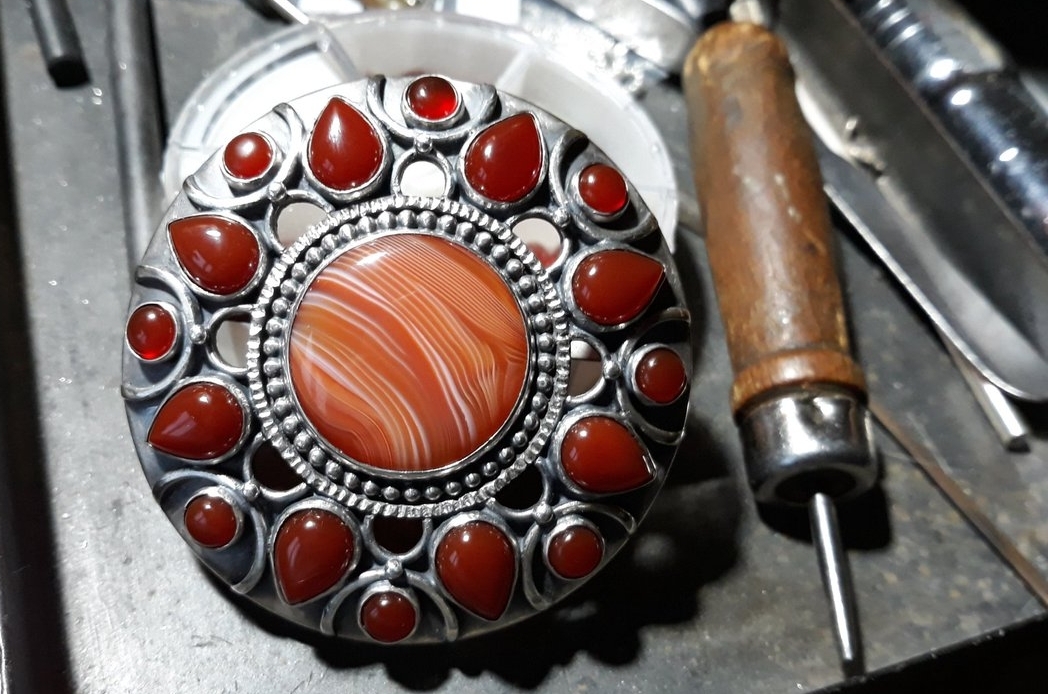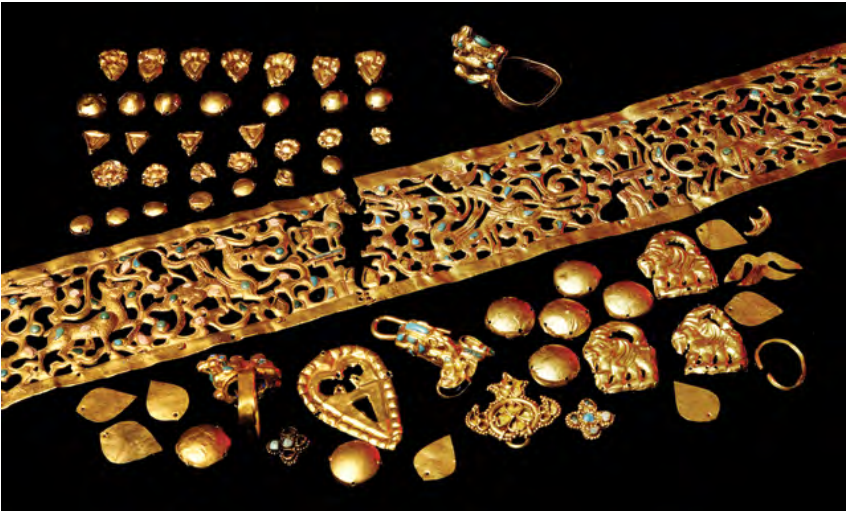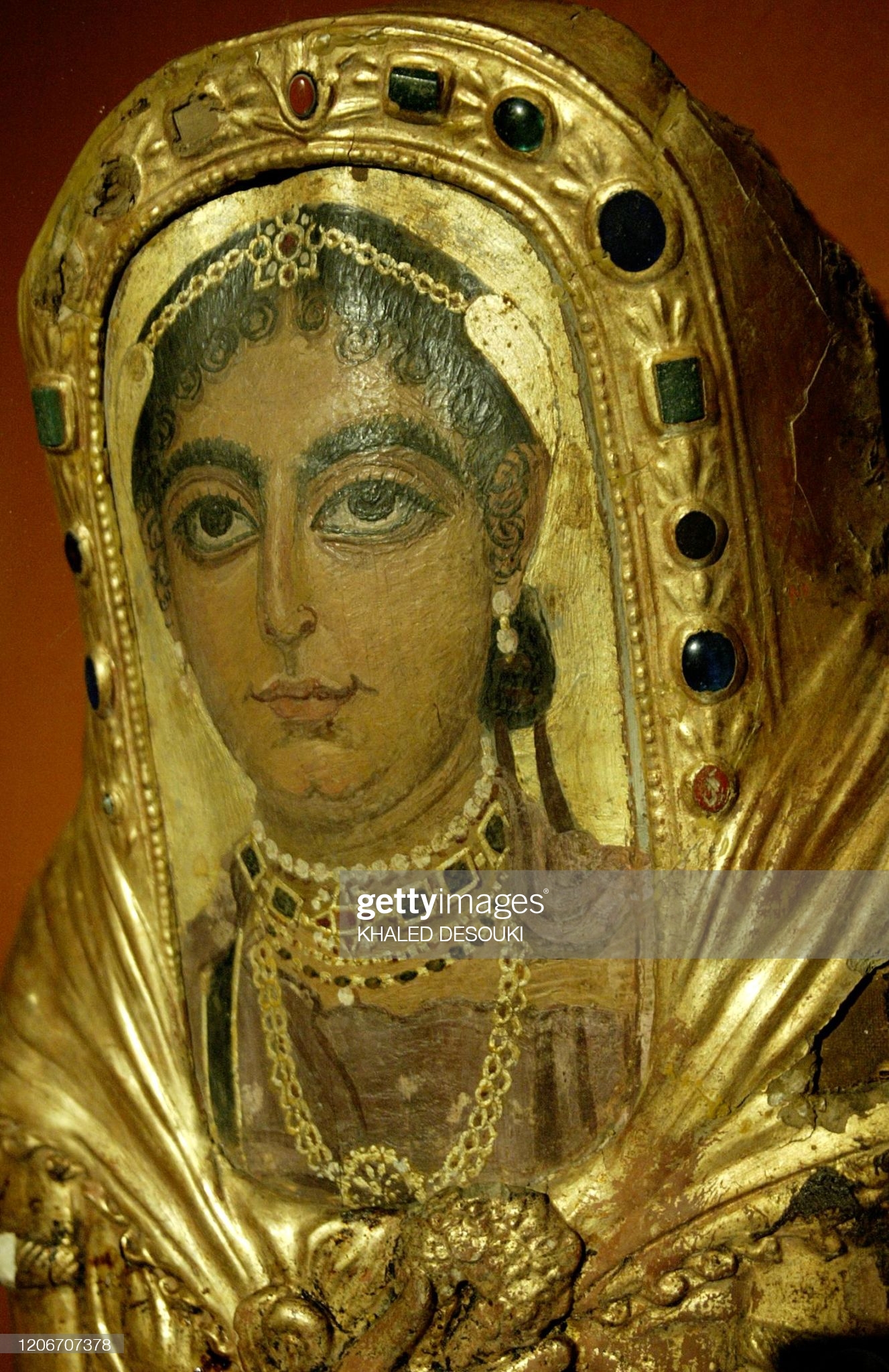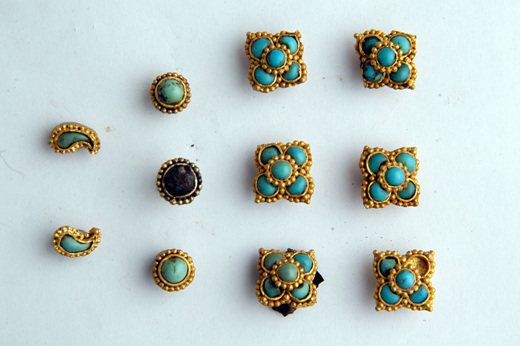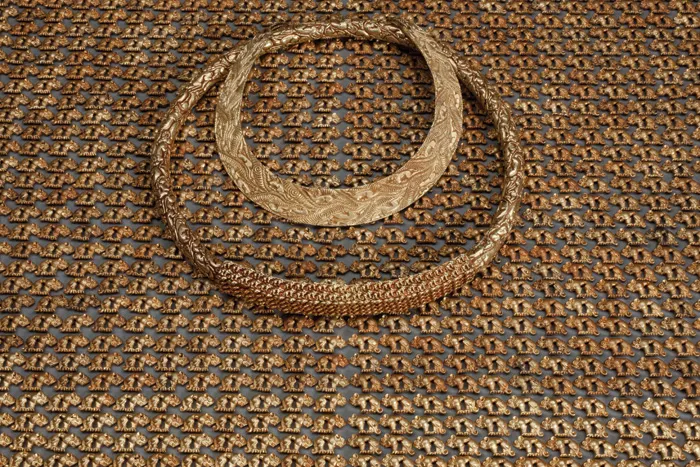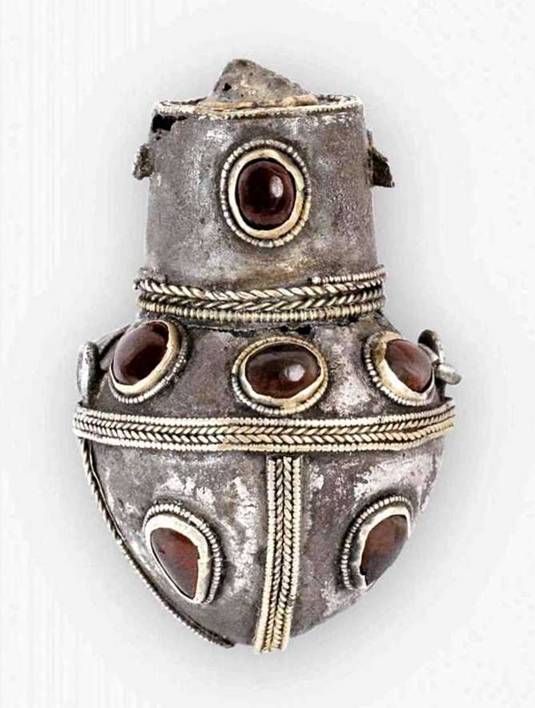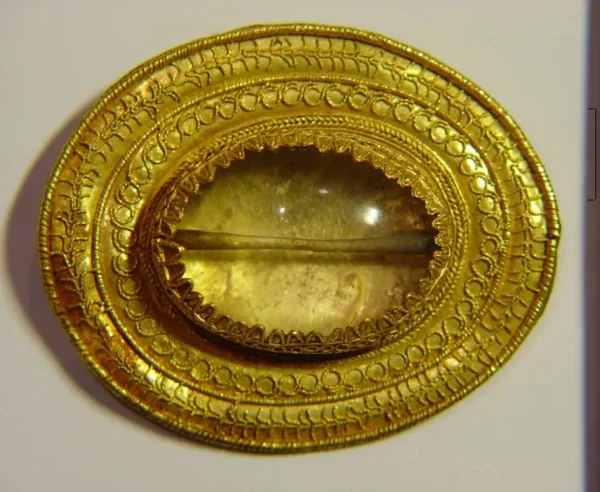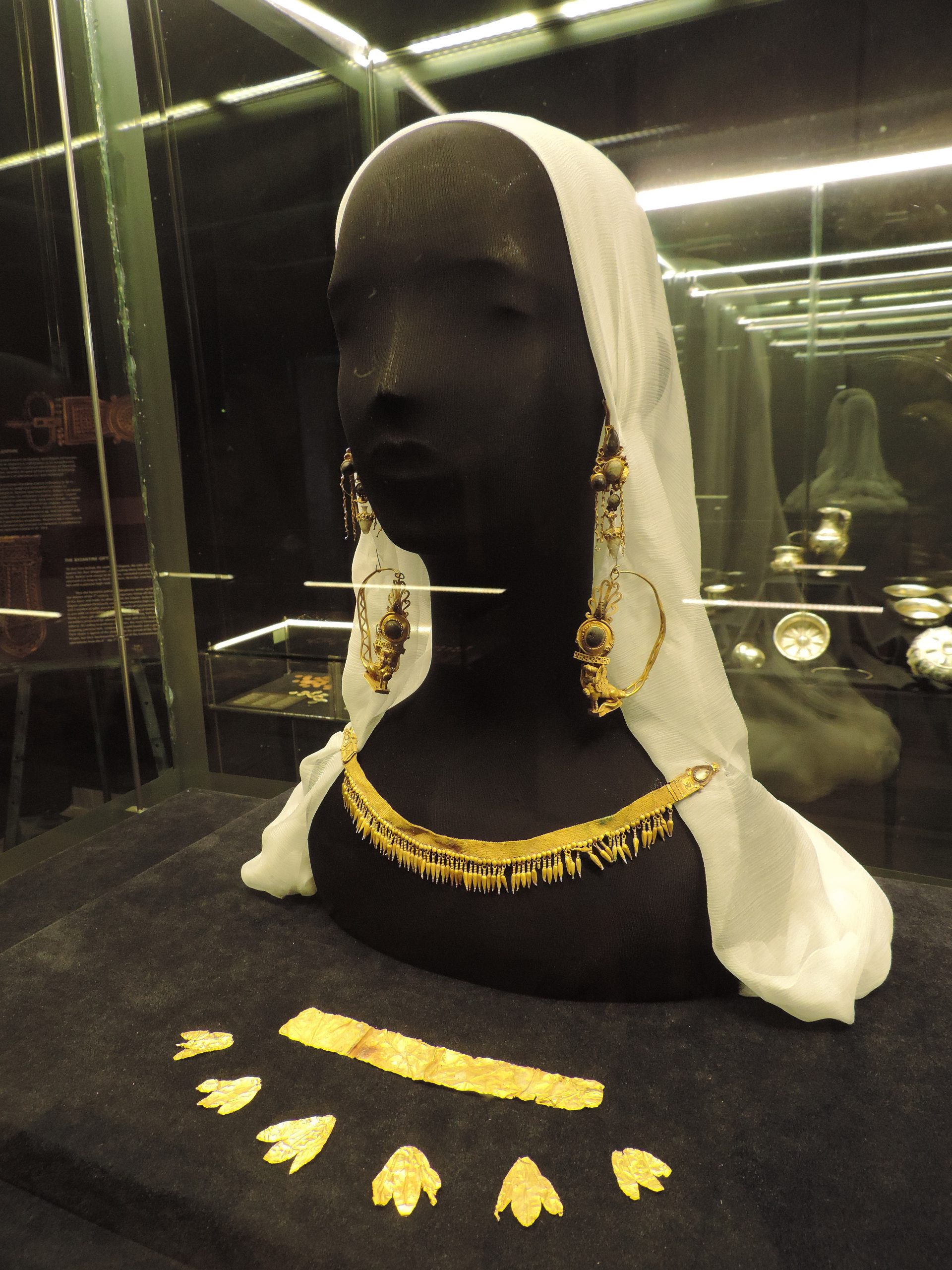The “Golden Woman” of Kazakhstan, 6th-5th century BCE, was a young girl of 15-18 years old, probable a priestess. She was quite tall – 170 cm, with long hair and a tattoo.
Mound No. 6 from the complex of elite burials of Taksai-1, in which “Altyn khanshayym” [Golden Woman] was discovered, turned out to be untouched. Scientists call their discovery “golden” because of the large number of products and jewelry made from this precious metal, like the massive golden temporal pendants, golden plaques embroidered on the back, a wrist decoration made of wolf fangs framed in gold.
The girl sitting on the skin of a wolf in the reconstruction of the burial, is not accidental. Researchers believe that the wolf was a powerful totem of that time, which confirms the unusual wolf fangs bracelet.
According to the archaeologist, the burial itself is rather unique, the burial chamber is made in the form of a chariot, which was inherent in either the military class or the noble class. It has a lot of related materials, but not a single weapon item. This speaks in favor of the fact that “Altyn khanshayym” lived during the time of the early nomads, when a woman was not yet actively involved in military affairs. Later, in the burials of the Sarmatians of the 4th-3rd centuries BCE, women will already have weapons. Scientists call such warriors “steppe Amazons”.
“Firstly, the rite of cremation, done on purpose and consciously. There are a lot of questions about this: either this is a traditional ritual, but so far there is no evidence for this, or it was an act aimed at hiding certain circumstances. In our opinion, this young woman was the victim of a violent death, ”the archaeologist believes.
Today, everyone can admire the “Golden Woman” revived literally from the ashes in the National Museum of the Republic of Kazakhstan.
West Kazakhstani archaeologists have demonstrated artifacts found in the ancient burial site “Taksai-1”, discovered in 2012 in the Terektinsky district of the West Kazakhstan region near the Taksai station.
Then, in a mound more than one meter high, scientists discovered the remains of the “Golden Woman”, about 80 pieces of gold jewelry, as well as a horse bridle, household items, jewelry and things that, according to legend, were necessary in the afterlife. One of the unique finds is a comb depicting a battle scene of that period between the Sakas and the Persians.
“The burial culture of the Golden Woman is more likely related to Zoroastrianism. Unfortunately, it is still difficult to determine the woman’s age due to the poor preservation of the bones. In addition, two guards were buried with her. According to the results of laboratory studies, it was found that the burial belongs to 6th-5th century BCE” says Murat Sdykov, director of the West Kazakhstan Regional Center for History and Archeology.
The famous restorer Krym Altynbekov was engaged in the reconstruction of the Golden Woman costume. Gold plaques of four types were sewn onto the upper part of the robe: different geometric shapes depicting griffon rams, rams, griffins, and swastika-shaped plaques. Scientists also call them solar, implying that the nomads of that time, according to the Avesta, prayed to the sun. Also on the sleeves of the dress were sewn pendants made of wolf fangs in a gold frame.
“The richness of the burial speaks of the status of the buried woman. This shows that even then there was a stratification of society, and there were few rich people in society. There are two more mounds near Taksai, which we will dig next year. touched and not looted by anyone,” Sdykov said.
Archaeologists have shown artifacts from the grave of the “Golden Woman” an article by Aldiyar Kosenov from https://tengrinews.kz/science/arheologi-pokazali-artefaktyi-iz-mogilyi-zolotoy-jenschinyi-260320/ 2014.
























RECONSTRUCTION OF THE FEMALE HEADDRESS OF IV-III BC ON MATERIALS OF THE TASARYK MOUND IN EAST KAZAKHSTAN K. K. Altynbekov, E. K. Altynbekova
https://www.academia.edu/resource/work/41709320
The article features a reconstruction of a 4th-3rd century BCE women’s headdress. The clothing was not decorated with durable materials, and the only findings comprised fragments of textile and traces of applications discovered with the use of X-ray technology. The complex headdress was better preserved due to the numerous wooden and golden foil decorative elements. The general contour of the headdress is rather clearly marked with a dark spot of decayed material. Fragments of a smooth wooden plate lying underneath the skull were identified as an integral headband of the crown. The locations and fastening methods were identified for all decorations: an openwork image of a mythical bird standing on its feet surrounded by rods symbolizing fern in various stages of growth; plaques and beads. An examination of decayed material revealed a wig in the form of braids and the lower edge of a silk cover. Graphical research supported by experimental modeling allowed to perform a material reconstruction of the headdress with the use of new materials.

https://www.researchgate.net/publication/342794298_Fierce_Birds_With_Fiery_Feathers
https://www.inform.kz/en/restored-urdzhar-princess-on-display-in-astana_a3501491/amp
